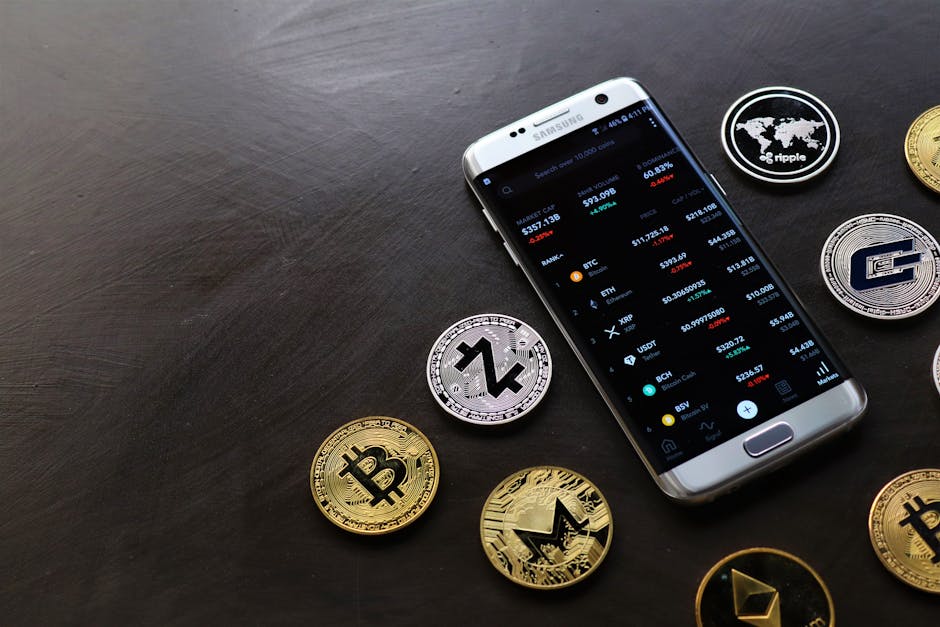Technologies Driving Digital Transformation
You’re about to enter a whirlwind of innovation, where technologies like AI, blockchain, IoT, cloud computing, 5G networks, and virtual reality are converging to transform industries and redefine the future of business. AI is revolutionising productivity, blockchain is securing transactions, IoT is driving real-time insights, cloud computing is powering scalability, 5G networks are redefining connectivity, and virtual reality is blurring reality’s edges. Buckle up, because these technologies are just getting started – and you’re about to discover how they’re reshaping the world, one innovation at a time. Stay tuned, the future is unfolding.
Key Takeaways
• Artificial Intelligence and Ethics prioritise human-centred design to ensure responsible innovation and mitigate unintended consequences.• Blockchain technology enables secure, transparent, and tamper-evident transactions, protecting digital assets and sensitive information.• IoT, sensor-driven insights, and cloud computing enable real-time data analysis, predictive maintenance, and optimised operations for industrial automation.• 5G Networks and Connectivity redefine connectivity with Enhanced Mobile Broadband, Ultra-Reliable Communications, and Network Slicing for seamless online experiences.• Virtual and Augmented Reality revolutionise learning, work, and entertainment, enabling immersive experiences and simulated training for critical skills development.
Artificial Intelligence Revolution

As you step into the sphere of digital transformation, you’re immediately confronted with the artificial intelligence revolution, which is rapidly rewriting the rules of business and beyond.
Suddenly, you’re faced with a myriad of questions: Will AI augment or replace human workers? Will it exacerbate existing biases or create new ones?
The truth is, AI’s impact is as unpredictable as a toddler with a box of crayons – it can create masterpieces or colourful chaos.
One thing’s for sure, though: the AI revolution demands a human-centred approach. It’s not just about developing fancy algorithms; it’s about designing systems that serve humanity, not the other way around.
That’s where AI ethics comes in – a vital aspect of digital transformation that’s often overlooked in the excitement of innovation.
As you navigate this brave new world, you must consider the moral implications of your creations. Are they transparent, explainable, and fair? Or are they perpetuating harmful biases and reenforcing existing social inequalities?
The AI revolution is a double-edged sword, capable of triggering unprecedented productivity and creativity, but also threatening to destabilise entire industries and societies.
It’s up to you to wield it responsibly, prioritising human-centred design and ethics in every aspect of AI development.
The future is uncertain, but one thing’s clear: the AI revolution will be shaped by the choices you make today.
Blockchain for Secure Transactions

You’re about to access the vault of secure transactions, where blockchain technology stands guard, safeguarding your digital assets with an iron-clad promise of transparency, immutability, and cryptographic security.
Your data is shielded from prying eyes and malicious actors.
Think of blockchain as the ultimate digital custodian, meticulously recording every transaction, guaranteeing that once a block is added, it can’t be altered or tampered with.
This tamper-evident ledger is the backbone of secure transactions, providing an unshakeable foundation for trustless interactions.
In the supply chain, blockchain’s cryptographic security verifies that products are sourced and tracked with precision, eliminating counterfeiting and reducing the risk of contamination.
Identity verification, too, becomes a breeze, as blockchain-based systems enable secure authentication, protecting sensitive information from identity thieves.
With blockchain, you can rest assured that your digital assets are protected by an impenetrable fortress of code.
No more worrying about data breaches or fraudulent transactions; blockchain’s got your back.
IoT and Sensor-Driven Insights

The Internet of Things (IoT) and sensor-driven insights are about to take your business to the next level.
You’re about to access real-time data analysis, which means goodby to relying on outdated reports and hello to making informed decisions on the fly.
And, let’s be real, who doesn’t want to automate industrial processes to save time and money?
Real-time Data Analysis
Harnessing the power of IoT and sensor-driven insights, you’re now able to tap into a real-time data analysis that’s as dynamic as the world around you. This means you can respond to changes as they happen, rather than reacting to yesterday’s news.
With real-time data analysis, you can:
Predict what’s next: Using predictive modelling, you can identify patterns and trends that inform your next move. No more guessing – you’ll have data-driven insights to guide your decisions.
Tell a story with data: Data storytelling is an art, and real-time analysis gives you the brushstrokes to paint a vivid picture of your business. You’ll be able to identify areas of improvement and optimise your operations with ease.
Act on instinct (backed by data): With real-time insights, you can trust your instincts, knowing they’re backed by hard data. This means you can respond quickly to changes in the market, customer needs, or operational hiccups.
Industrial Automation Advantages
By leveraging real-time data analysis, you can tap the full potential of industrial automation, where IoT and sensor-driven insights become the keys to optimising production, minimising downtime, and maximising efficiency.
With these insights, you can identify bottlenecks in your supply chain and streamline operations to reduce costs and increase productivity.
Predictive maintenance is another significant advantage of industrial automation.
By analysing sensor data, you can detect potential equipment failures before they occur, reducing downtime and saving you from costly repairs.
This proactive approach also enables you to schedule maintenance during planned downtime, minimising the impact on production.
Moreover, IoT and sensor-driven insights enable you to make data-driven decisions, rather than relying on gut feelings or assumptions.
You can identify areas for improvement, optimise resource allocation, and even create new revenue streams.
The result? A more efficient, agile, and resilient operation that’s better equipped to thrive in today’s fast-paced digital landscape.
Cloud Computing Powerhouses

Your business is only as agile as your cloud computing infrastructure, and that’s why you need to partner with the heavy-hitters – Amazon Web Services (AWS), Microsoft Azure, Google Cloud Platform (GCP), and IBM Cloud – to stay ahead in the digital transformation game.
These cloud computing powerhouses offer the scalability, flexibility, and reliability you need to drive innovation and growth.
When it comes to cost optimisation, the big four cloud providers have got you covered.
-
Reserved Instances: By committing to a certain level of usage, you can snag significant discounts on your cloud computing costs.
-
Hybrid Infrastructure: By combining on-premisses infrastructure with cloud-based services, you can optimise your costs and improve efficiency.
-
Right-Sizing: With the ability to quickly scale up or down, you can confirm you’re only paying for the resources you need.
With the big four, you can focus on what matters most – driving business growth and innovation. So, what’re you waiting for? Partner with the cloud computing powerhouses and take your business to the next level.
5G Networks and Beyond

You’re probably thinking 5G is the pinnacle of mobile network tech, but you’re about to be schooled – G Networks and Beyond is where the real magic happens.
Next-gen network architecture is redefining the game, and you’re about to find out how Enhanced Mobile Broadband and Ultra-Reliable Communications are changing the digital landscape.
Buckle up, because the future of connectivity is about to get a whole lot more interesting.
Next-Gen Network Architecture
As we hurtle towards a future where 5G is already becoming the new normal, the next frontier of network architecture is shifting gears to accommodate the unprecedented demands of exponential data growth and IoT proliferation.
You’re probably wondering what this means for the future of connectivity. Well, buckle up, because next-gen network architecture is about to take things to the next level.
To tackle the demands of tomorrow, networks need to be more agile, flexible, and scalable. That’s where the following technologies come in:
Network Slicing: allowing multiple independent networks to coexist on a single physical infrastructure.
Edge Computing: bringing computing resources closer to the user, reducing latency and improving real-time processing.
Artificial Intelligence: enabling networks to self-organise, self-heal, and self-optimise in real-time.
These technologies will enable networks to dynamically adapt to changing demands, ensuring seamless connectivity and paving the way for a truly interconnected world. With next-gen network architecture, the possibilities are endless – and you’re about to be a part of it.
Enhanced Mobile Broadband
With 5G already redefining the mobile landscape, Enhanced Mobile Broadband is poised to catapult wireless connectivity to unprecedented heights, promising to deliver blistering speeds that will leave even the most demanding users breathless.
You’ll no longer have to worry about buffering or lagging, as Enhanced Mobile Broadband guarantees seamless video streaming, online gaming, and cloud computing. This means you’ll be able to enjoy uninterrupted services, thanks to advanced Mobile Optimisation techniques that prioritise your data traffic.
However, with great power comes great responsibility (and potential Network Congestion). As more devices get connected, the risk of network overload increases.
To mitigate this, Enhanced Mobile Broadband employs advanced traffic management and resource allocation strategies, safeguarding that your online experience remains smooth and efficient.
Ultra-Reliable Communications
In the era of Ultra-Reliable Communications, where 5G networks are merely the starting point, mission-critical services like autonomous vehicles, smart grids, and remote healthcare will rely on G networks and beyond to deliver latency-free, bullet-proof connexions that can literally mean the difference between life and death.
You’ll need networks that can support latency-sensitive applications, where every millisecond counts.
Autonomous vehicles: Where split-second decisions can prevent accidents and save lives.Remote healthcare: Where real-time video consultations and remote surgeries require glitch-free connexions.Smart grids: Where reliable, real-time monitoring and control can prevent power outages and blackouts.
In this world, Mission Critical services will demand Ultra-Reliable Communications that are 99.999% reliable, with latency of less than 1 ms. Anything less would be, well, unacceptable. The stakes are high, and the tech needs to deliver.
Cybersecurity in the Digital Age

You’re only one click away from becoming a cybercriminal’s next target, thanks to the alarming ease with which hackers can exploit vulnerabilities in your digital footprint. It’s a harsh reality, but one that demands attention in this digital age.
As you navigate the online world, you’re leaving behind a trail of personal data, passwords, and sensitive information – a treasure trove for cybercriminals.
Effective password management is vital in today’s digital landscape. Using the same password across multiple accounts is a recipe for disaster. Imagine having your entire online identity compromised with just one password breach.
It’s a nightmare scenario, but one that can be avoided with robust password management practises. Consider using password managers to generate and store unique, complex passwords for each account.
But password management is just one aspect of cyber governance. It’s imperative to have a holistic approach to cybersecurity, encompassing policies, procedures, and technologies to protect your digital assets.
Cyber governance involves identifying vulnerabilities, evaluating risks, and implementing measures to mitigate them. It’s a proactive approach that requires constant vigilance and adaptation to emerging threats.
Don’t wait until it’s too late – take control of your digital security today. Remember, you’re only one click away from becoming a cybercriminal’s next target.
Virtual and Augmented Reality

Virtual reality is highjacking your senses, transporting you to fantastical worlds and simulated experiences that blur the lines between reality and phantasy. You’re no longer just a passive observer; you’re an active participant in a world of make-believe.
But, let’s get real, this isn’t just about gaming and entertainment. Virtual and augmented reality are revolutionising the way we learn and work.
Take, for instance, virtual training. You can practise surgeries, operate heavy machinery, or respond to emergency situations in a simulated environment, all without risking real lives or equipment. It’s a game-changer for industries like healthcare, manufacturing, and aviation.
Virtual and augmented reality are transforming education in several ways:
-
Interactive lessons: Imagine learning about the human body by exploring a 3D model, or travelling back in time to witness historic events.
-
Personalised learning: With AR, students can receive tailored lessons based on their learning style and pace.
-
Enhanced engagement: Virtual field trips and interactive simulations make learning fun and engaging, increasing student motivation and participation.
As virtual and augmented reality continue to advance, we can expect to see even more innovative applications in fields like education and training. The possibilities are endless, and the implications are profound. Buckle up, folks, because the future of learning is about to get a whole lot more interesting!
Conclusion
As you stand at the threshold of this digital revolution, the winds of change are whispering secrets in your ear.
The technologies driving this transformation are the sparkplugs igniting the engines of progress.
Artificial intelligence is the mastermind, blockchain is the guardian of trust, IoT is the all-seeing eye, cloud computing is the powerhouse, 5G is the speed of light, cybersecurity is the shield, and virtual reality is the canvas.
Buckle up, because the future is about to get real.
Contact us to discuss our services now!
